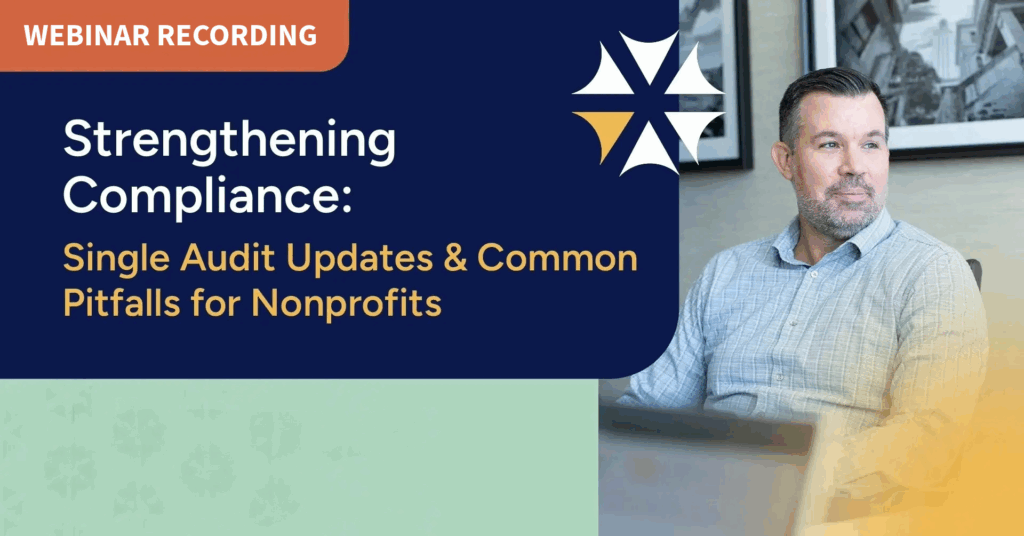
Revenue recognition can be a complex area of accounting, especially for software as a service (SaaS) companies. Accounting Standards Codification 606 (ASC 606) brings additional challenges and considerations to subscription revenue recognition. At Maxwell Locke & Ritter, we understand the complexities of SaaS revenue recognition and are ready to help you tackle those challenges.
The Basics of Revenue Recognition Under ASC 606
The basic idea under ASC 606 is that revenue should be recognized in a way that clearly reflects the transfer of promised goods or services to customers, at a value that matches what the company expects to get in return. ASC 606 outlines a five-step model for navigating the revenue recognition process:
- Identify the Contract: Contracts can be written, verbal, or even just implied by standard business practices. However, for the rules under ASC 606 to apply, contracts need to be enforceable, and it must be likely that payment will be collected.
- Identify Performance Obligations: Performance obligations are promises a company makes to transfer distinct goods or services to a customer, which can be outlined in the contract or result from the company’s customary business practices. A typical performance obligation for SaaS companies includes combined access to cloud-hosted software and related support services.
- Determine Transaction Price: The transaction price is the amount of consideration the company expects to receive from the customer in return for fulfilling its performance obligations. When estimating the transaction price, companies need to think about factors like variable consideration, financing, non-cash consideration, and any potential payments made by the company to the customer.
- Allocate Transaction Price: When a contract has multiple performance obligations, companies need to allocate the transaction price to each based on their relative standalone selling prices. This process requires careful analysis and judgment.
- Recognize Revenue: Revenue is recognized consistent with how control of the performance obligations is transferred to customers – either at a point in time or over time. For SaaS companies, because customers benefit continuously over their subscription period, subscription revenue is typically recognized over that period.
While these steps may seem straightforward, applying them to SaaS models can sometimes be complicated. Along with the revenue rules under ASC 606, companies are also now required to capitalize certain contract costs, such as commissions and costs incurred in fulfilling contractual obligations.
Navigating Complexities in Subscription Revenue Recognition
Revenue remains a critical and often complex issue for SaaS companies due to the intricacies of some SaaS arrangements and evolving business models. Here are some common subscription revenue recognition challenges faced by SaaS companies:
- Accounting for Up-Front Services: When SaaS companies provide up-front services, it’s necessary to analyze whether these are setup activities, part of the combined SaaS performance obligation, or a separate performance obligation.
-
-
- Setup Activities: If the up-front services solely enable the customer to access and use the SaaS application, they are considered setup activities. Fees charged for these activities create deferred revenue recognized over the subscription period, and sometimes longer in certain circumstances. Should these setup activities require significant costs for the SaaS company, capitalization may be necessary, with the expense spread over the subscription period or further, depending on the situation.
- Combined SaaS Performance Obligation: Some up-front services are treated as part of a combined performance obligation with the SaaS application, such as: (1) customization services modifying the software code, or (2) services requiring access to the software code that are integral to the customer’s ability to use the software as intended. Fees charged for these services generally result in deferred revenue recognized over the subscription period, or possibly longer. Similarly, substantial costs incurred in providing these services may require capitalization, with expenses recognized over the subscription period or longer.
- Separate Performance Obligation: Up-front services that neither modify the software code nor are essential for the SaaS functionality typically qualify as separate performance obligations. These include activities such as configuration, implementation planning, training, data migration, and more. Revenue from these services is typically recognized over the period these services are provided.
-
-
- Multiple Performance Obligations: The total transaction price must be allocated to each separate performance obligation in a customer contract based on relative standalone selling price, with any discount or variable consideration in the contract generally allocated proportionately to all performance obligations. For instance, when a company provides a discount on non-complex implementation services bundled with a SaaS subscription, that discount must be allocated to both the SaaS and implementation services. As these implementation services are not sold separately from the SaaS subscription, management must exercise significant judgment to determine standalone selling price for this purpose.
- Accounting for Commissions: Companies are often required to capitalize the incremental costs of obtaining a customer contract, recognizing these expenses over the period of subscription revenue, or sometimes longer if commissions on renewal contracts are less than those of the initial contract. As a practical expedient, companies may choose to expense these costs as incurred if the period for expense recognition would otherwise be one year or less. However, eligibility for this expedient depends on whether renewal commissions are commensurate with initial commissions. For example, if a company offers a 5% commission on initial contracts but only 2% on renewals, it cannot apply this practical expedient.
In navigating the complexities of subscription revenue recognition, understanding the challenges is not only beneficial, it’s also essential for SaaS companies in improving their revenue recognition practices, enhancing financial reporting, and building investor confidence. At Maxwell Locke & Ritter, we are committed to guiding our clients through the intricacies of subscription revenue models with practical and proactive, real-time advice.
Contact us today to discuss how we can provide the financial insights, business strategy, and ongoing support your business needs to thrive.
Learn more about our financial statement assurance & advisory services




